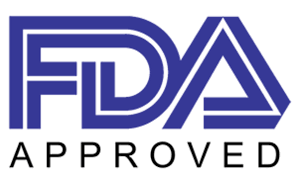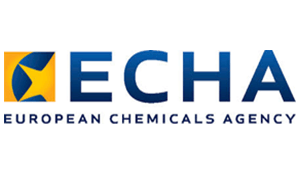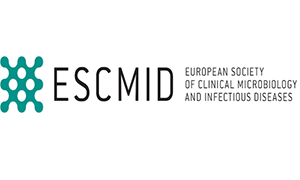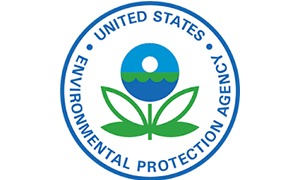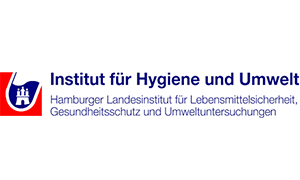حمام السباحة
SWIMMING POOL
The merits of chlorination as a means of destroying bacteria in water is beyond dispute and the process is firmly and universally established. In recent years, however, the appearance of resistant strains of bacteria, the discovery of legionella and other problems associated with chlorine compounds have promoted an interest in alternative water purification systems amongst which Envirolyte products are prominent.
Continuously injecting Envirolyte solutions within a swimming pool render the swimming water safe without the adverse effects of chlorine. Envirolyte solutions destroy all bacteria, viral organisms, fungi and algae at a neutral pH level. This is particularly relevant for older skin which is more easily damaged by exposure to chlorine treated water.
By maintaining sterility of the filter beds, secondary contamination of the filtered water is prevented.
The disappearance of chlorine smell, absence of burning eyes sensation and negative skin reactions all make the water a more pleasant environment to swim in.
This system of disinfecting has been used for over two years in several swimming pools in Moscow and has been approved by the authorities as a safe and preferable alternative to chlorinating.
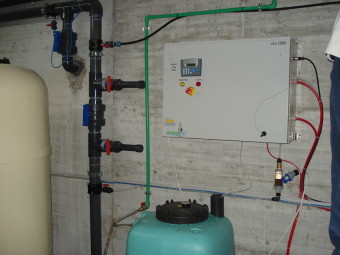 ELA-2000 in a Swimming Pool in Italy
ELA-2000 in a Swimming Pool in Italy
These pools from Argentina, Italy and Spain reported the following findings and benefits
- Although seemingly analogous to chlorine, anolyte is unique and clearly superior to sodium hypochlorite in the destruction of spores, bacteria, viruses and other pathogen organisms on an equal residual base. Sodium hypochlorite in concentration of 5% is effective only in disinfection, but not sterilization. Sodium hypochlorite is neffective against cysts (Guardia, Cryptosporidium);
- Most of the pathogens, particularly water born, develop resistance to Sodium hypochlorite over time.Anolyte application, as water disinfectant on a daily basis for more than ten years, demonstrated that microorganisms do not develop resistance against anolyte over time;
- The required contact time for anolyte is lower;
- Sodium hypochlorite loses its activity during long-term storage and poses potential danger of gaseous chlorine emission during storage;
- Anolyte is better soluble;
- The bactericidal efficiency remains in pH values between 4 and 9;
- Anolyte is minimally corrosive primarily due it’s low concentrations and, also due, to the elimination of the caustic element normally found in Sodium and Calcium Hypochlorite;
- The reaction of anolyte and organic materials produces about half of the trihalomethanes as does chlorine;
- Anolyte eliminates existing scale and pathogens harbored in scale and blocks dissolved solids in supplied water from forming new scale. Biofilm is eliminated. Sections of a building are not required to be closed to normal use during treatment;
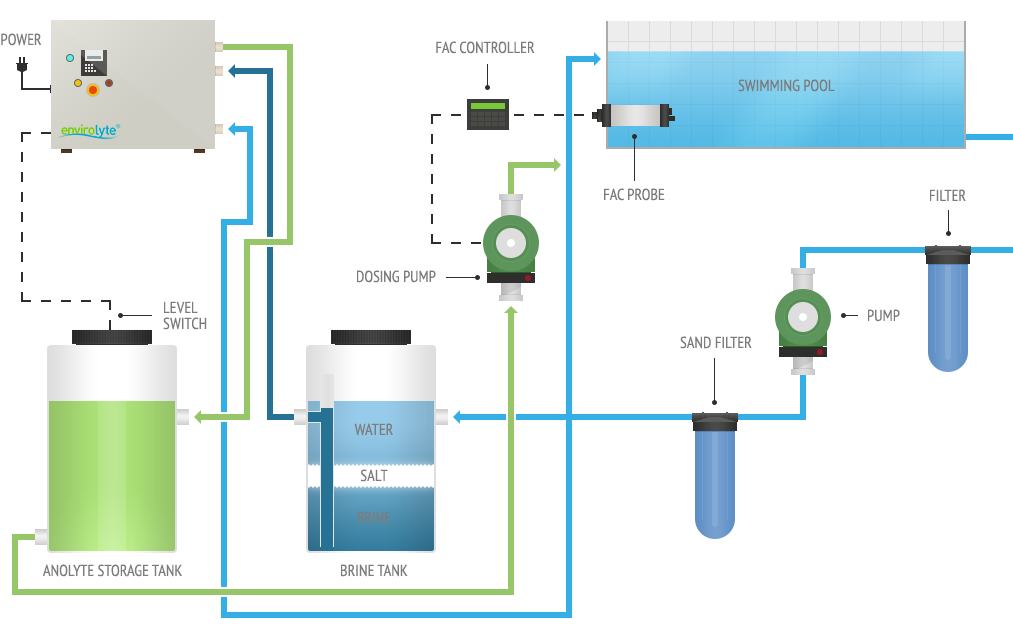 Envirolyte Ekipmanlı Yüzme Havuzu Sistemi
Envirolyte Ekipmanlı Yüzme Havuzu Sistemi
